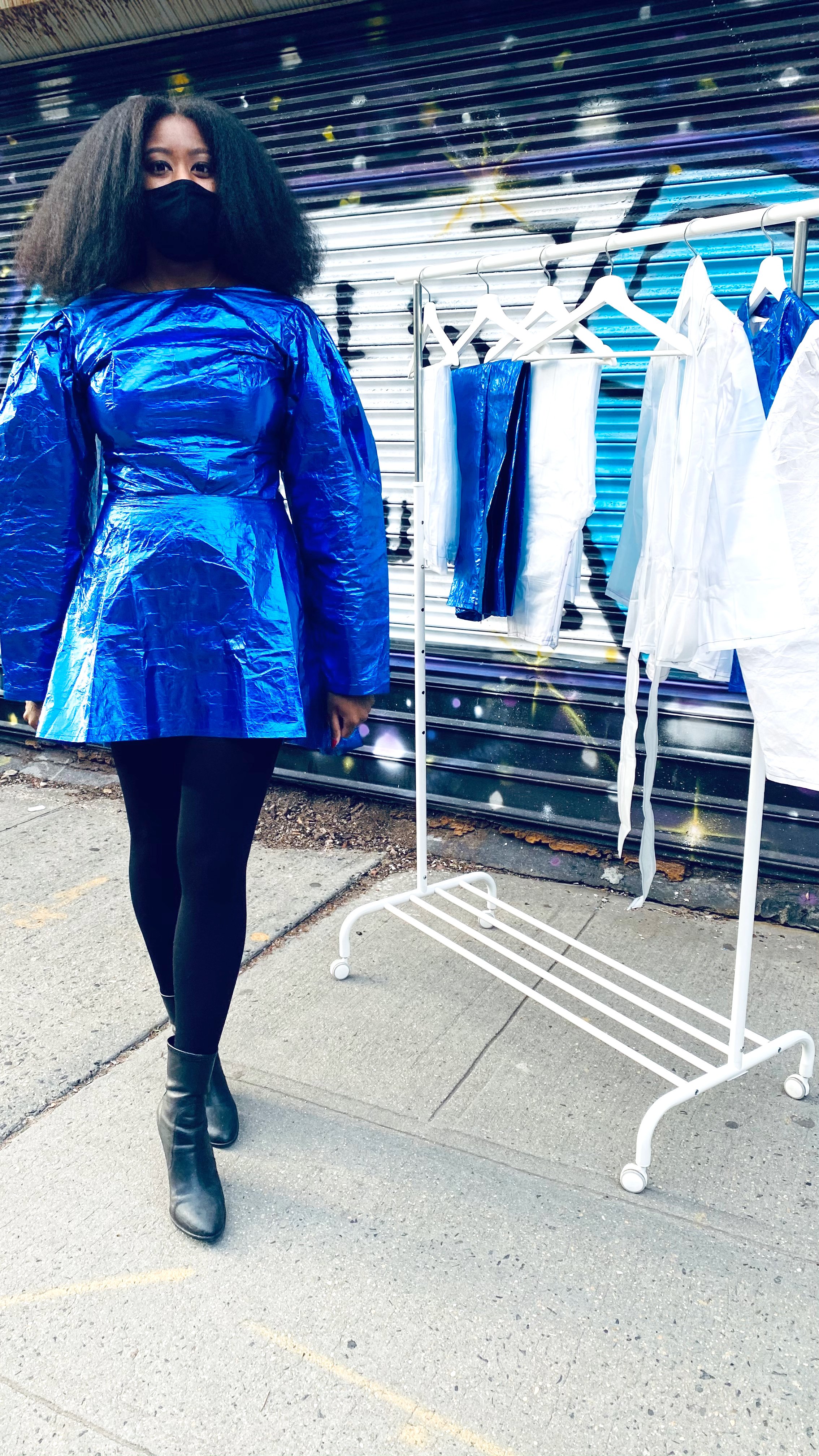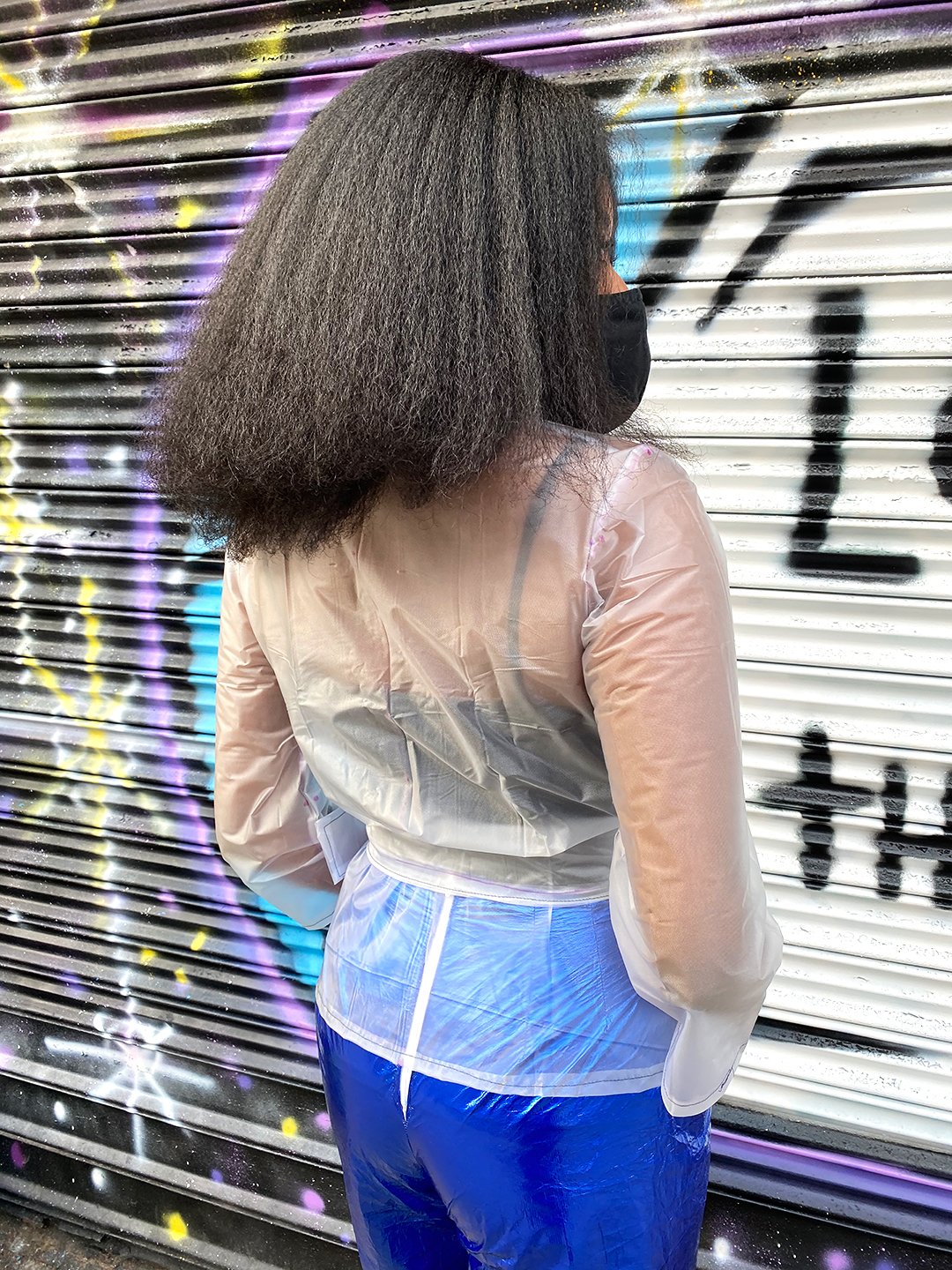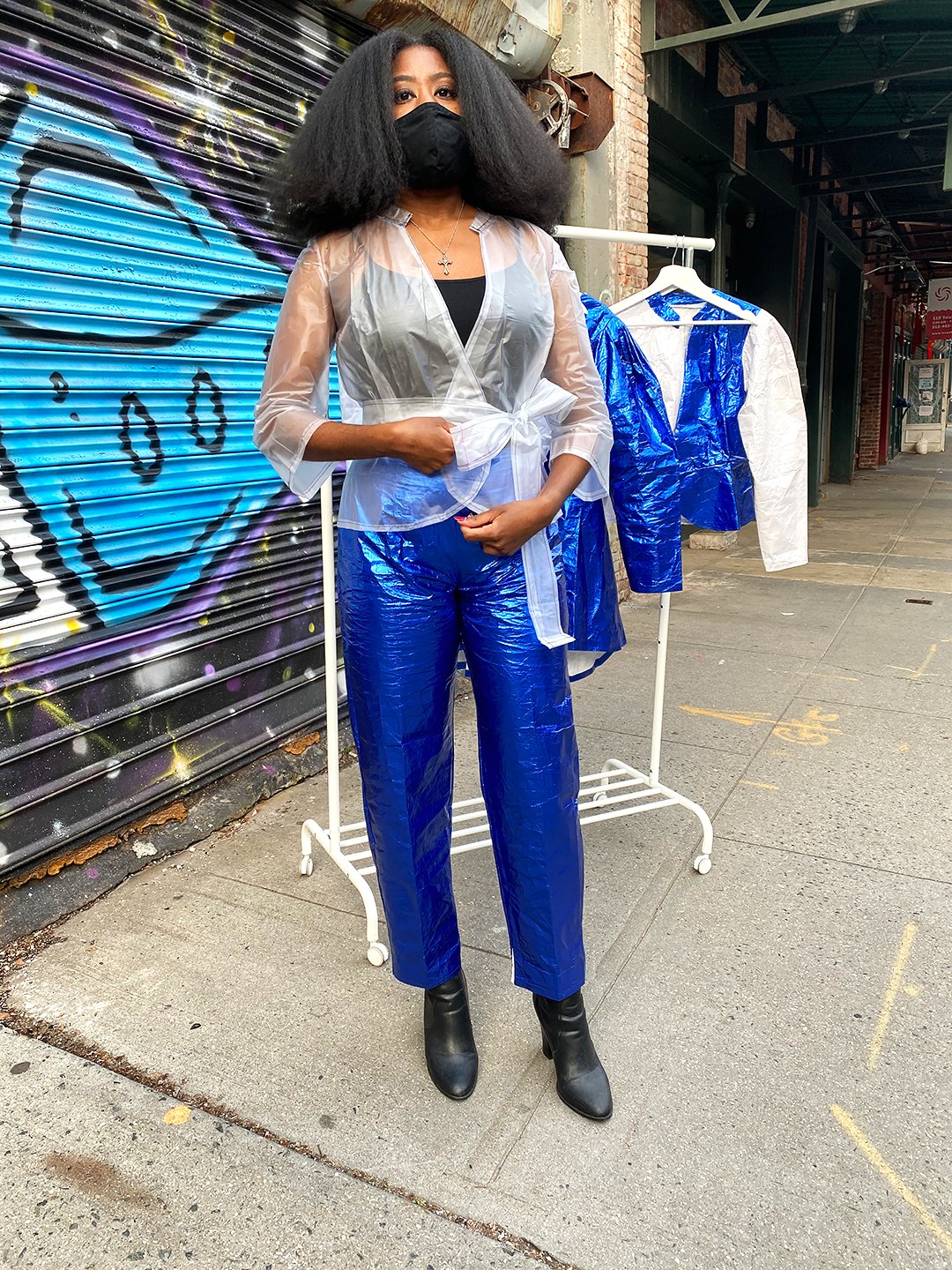Anti
Anti
2021 NYCxDESIGN Awards Winner!
Product vision
Anti is a wearable take on disaster resilience in which everyday garments offer the service of protection during times of unprecedented and unexpected danger. Crafted from Dupont protective fabrics like Tyvek and Nomex, which are respectively antimicrobial and fire retardant, Anti contends that clothing can do much more than make a statement; clothing can save your life, or, at the very least, your body.
Anti is a streetwear brand building hype around stylish garments whose materials have been engineered to protect the human body from microbes, chemicals, fire, particulate matter, and more. Used extensively as protective wear for the engineering and medical fields, Dupont’s performance fabrics protect the well-being of workers daily. Workers in those industries understand that not wearing their protective clothing is an extreme risk to their health because they work in places where accidents can happen at any time. For those of us who do not work in those fields, disasters involving fire, chemicals, and microbes can seem unlikely, though cities have been known to experience these types of accidents with growing frequency in the form of building fires, terror threats, and the recent pandemic. Just as workers in engineering don their protective gear every day, Anti believes that people living in cities should do the same, not because there is the risk of disaster every day, but because no one can predict which day will be the day in which a flame-retardant suit jacket work was the only difference between life and death.
The key Insight that Inspired Anti
The inspiration for Anti comes from excerpts from William Langewiesche’s American Ground: Unbuilding the World Trade Center, in which it was documented that many of the bodies that were recovered from the September 11th Terrorist Attack on the Twin Towers were the bodies of firefighters who were protected by their fire retardant jackets, whose outer linings are often made of Tyvek, Nomex, or another fire retardant fabric. On the contrary, the bodies that were never recovered from the site, because they were incinerated by the immense heat and fire that were both the cause and result of the falling towers, were the bodies of female office workers, whose delicate dresses and blouses offered zero protection in the moment of crisis. Anti is designed for them and their families, as much as it is for those of us who have not and may never experience such a tragedy. My hope is that when people wear the Anti garments, they will feel cool and stylish, but also secure because, in the event of a fire, pandemic, or worse, they have taken a step toward preparation by adorning themselves with garments that have been engineered for such occasions as those.
Furthermore, Anti is designed for the families and friends of those who may ultimately perish in the hypothetical disaster in the sense that the garments are intended to protect the body enough so that, once recovered it can be returned to the family for proper blessing and burial. One of the hardest things to recall from those months following 9/11 was not the names of victims whose bodies were found lifeless, but the victims whose bodies were never found. It seems hard enough to lose a loved one, and even tougher to not have any means of physically mourning their passing. Anti is created as a protector of last resort; in the event that the worst still happens, there is a hope that the garments would ensure that the wearer’s body could be returned to their family and friends so that they can have proper closure and begin the journey of healing as quickly as possible. With Anti, wearers can give themselves a better chance at surviving an unexpected disaster, increasing their odds of at least their body surviving whatever the crisis may be.
Tools
Activities
Sewing Machine
Sewing Kit
Dress, pants, and jacket patterns
Dupont Tyvek
1 Product Vision Session
4 Garment Prototyping Sessions
Lessons Learned
Anti was crafted almost purely from insights derived from secondary research at the inception of my graduate thesis exploration. Since this was one of my earliest artifacts, I was able to use Anti as a discussion topic during the qualitative interviews that constituted the bulk of my primary research. In one particular conversation with a research participant who was present during the 2020 Beirut Explosion, the importance of individual protection surfaced as she highlighted the fact that many non-life-threatening injuries she witnessed that day were caused by falling shards of glass. She loved the idea of clothing that could have protected her friends and family during such a sudden, disastrous event that occurred on what seemed to be an ordinary day.
Her comments on the value of this idea came as a surprise because it is a common mindset in the design and innovation spaces to distance oneself from the earliest insights and ideas that emerge in our work. Time and again I have read articles by renown designers warning of the dangers of falling in love with your earliest ideas because they are often the worst. For this reason, I had not previously placed a significant focus on those early insights, as I was focusing all of my attention on getting deeper into the research and identifying as many new insights as possible, all in an effort to get to “the right ones”. Feedback from this participant served as watershed findings in my thesis work for many reasons, but the most important lesson I learned was that I should not completely discount my early ideas. While they may not be as well-informed as ideas that come later in the process, the early ideas have value in that they are the mind’s prototypes of solutions to come. Neither perfect nor complete, early ideas are often straightforward and that simplicity is valuable. Now, instead of assuming that early ideas or insights are probably not the best, I look at ways that they can be refined or combined with later ideas and insights to address the challenge at hand. When early findings or ideas persist even as more findings and ideas surface, I now embrace and explore them critically while knowing that “the right idea” or “the right insight” can appear at any phase of design.









